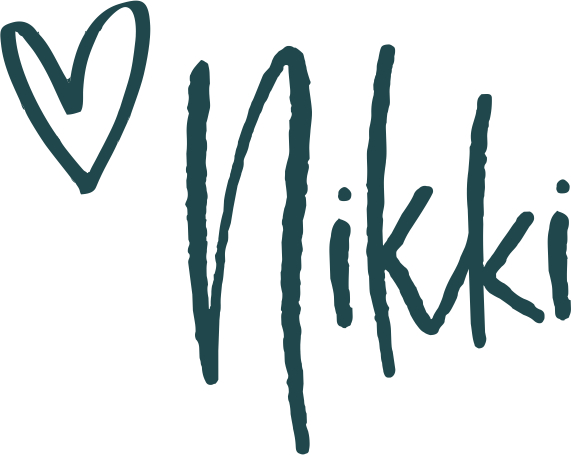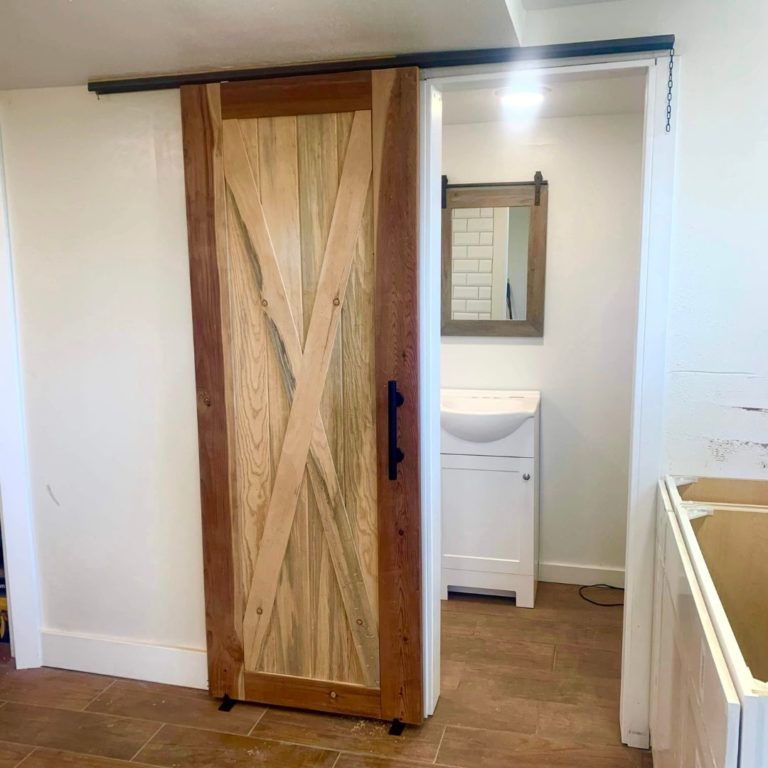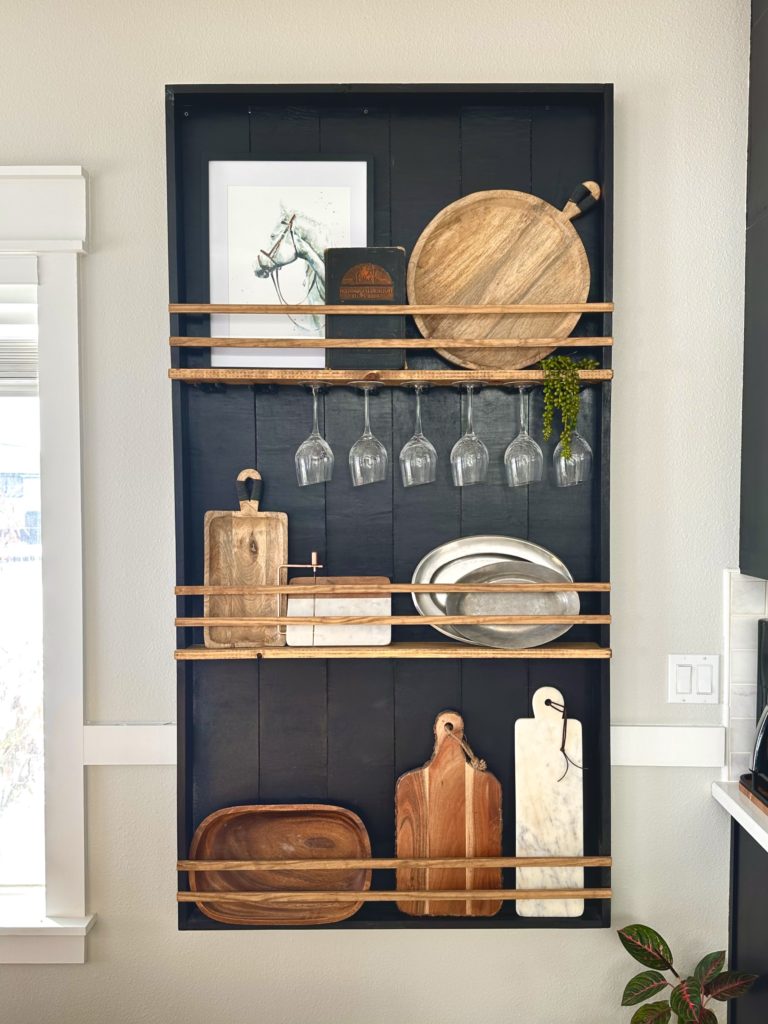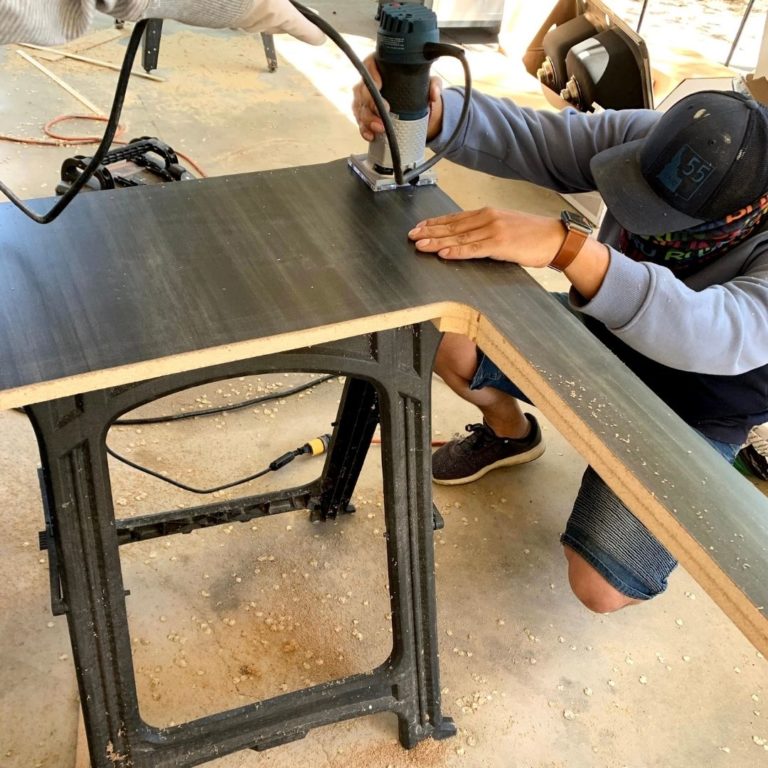DIY Herringbone Subway Tile Backsplash
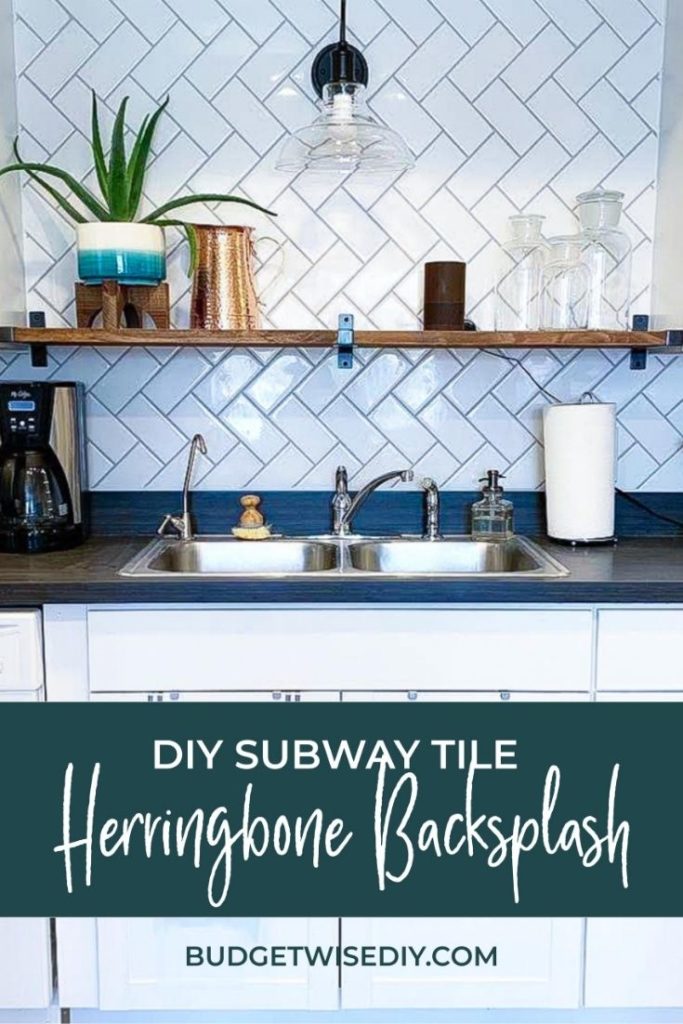
*This post may contain affiliate links – my full disclosure statement is available here
This is one of my favorite projects to date and it was seriously so cheap. Almost two years later and I still love how much character it added to the space.
Subway tiles are classic, but traditional patterns can be suuuuper boring so here’s how we used less than $100 worth of subway tiles to DIY a modern herringbone backsplash.
1. Prep your walls
Remove any existing material (in our case wainscoting and a sh*t ton of glue), patch large holes, take down light fixtures/switch plates, etc. Don’t worry about getting your surface too perfect! You’ll be putting a layer of mortar on top that will need something to grab onto.

2. Choose your pattern
Herringbone patterns can be laid in a number of different ways – classic, straight, stacked/vertical – it all depends on where you want the pattern to draw your eyes. We chose a vertical pattern to help provide some “length” to our walls. Just be sure to lay out your tiles and try different patterns until you find one you’re happy with.
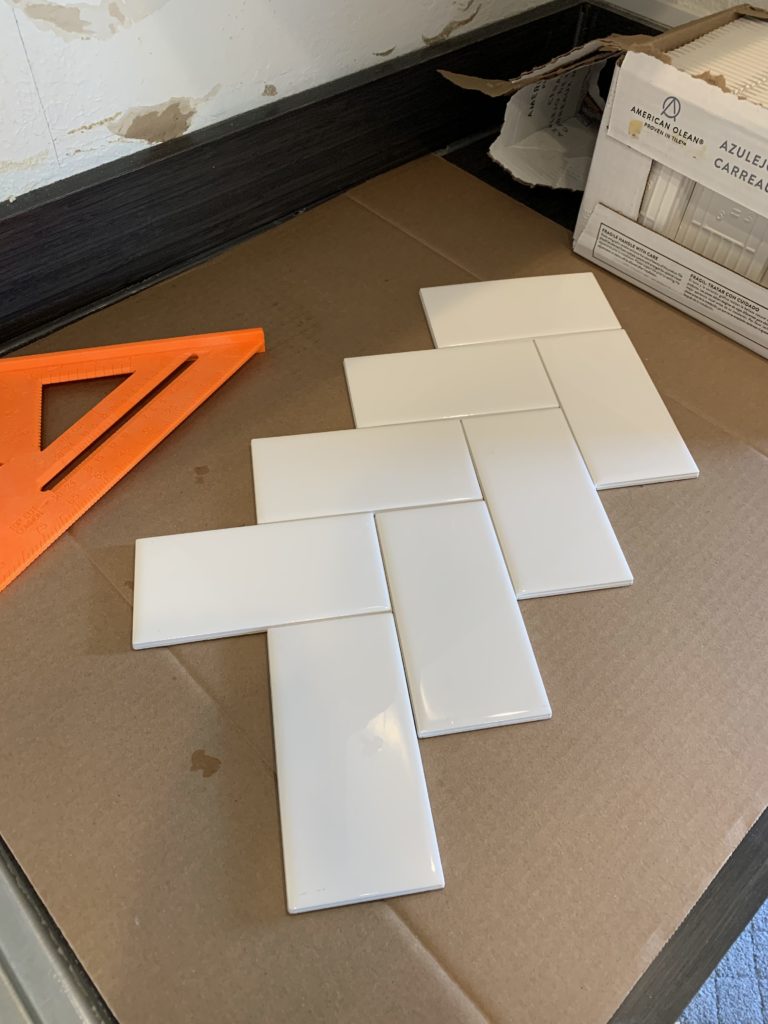
3. Decide where to start
There’s a lot of advice out there on the subject and after nearly a dozen tiling projects large and small all I can say it that this is very subjective. Nothing is straight. NOTHING. So my general rule of thumb is to start in the area that you will be looking at the most.
Because we didn’t want to lay whole tiles along the countertop (hello a ton of small cuts) and I knew that my eyes would never forgive me if the tile along this space was uneven in any shape or form we decided to start along the center of the wall at the edge of the countertop.
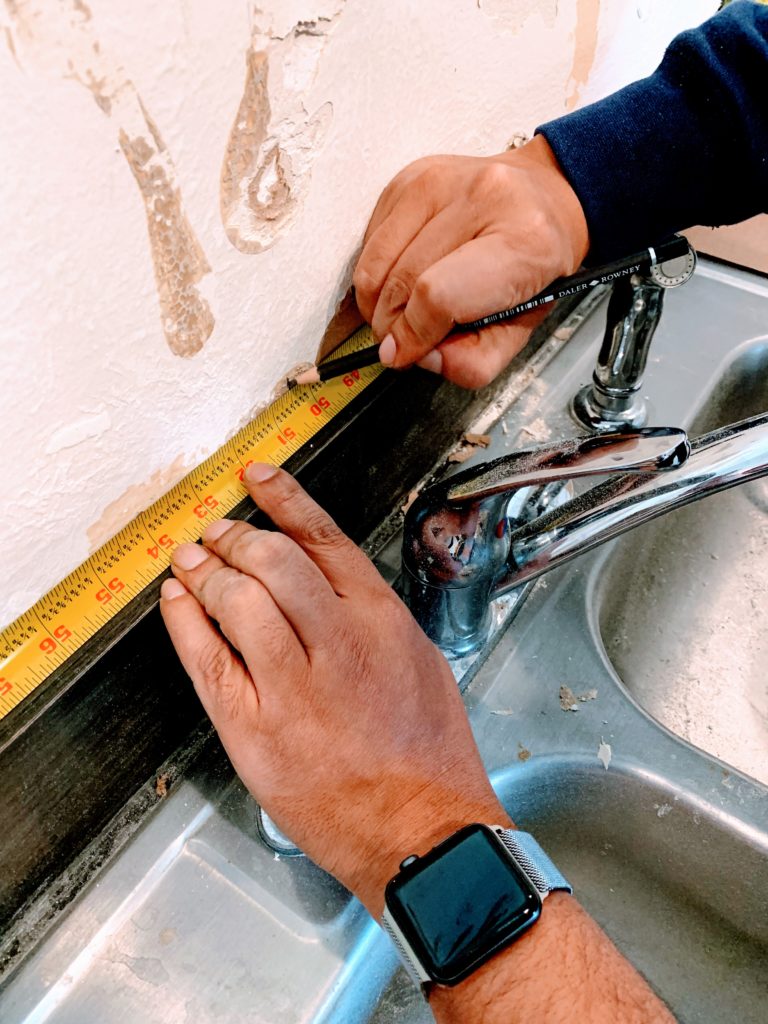
4. Start cutting your tiles
The best part about a herringbone pattern is that everything is laid at 90 degree angles – which means that all of your cuts will be at 45 degree angles. Cut one, test it, then go on and cut a bunch more.
Also, please be safe, wear your safety goggles, and don’t put your fingers too close to the blade.
(We scored this tile saw off of FB and it is awesome! If you plan on doing more than a couple tiling projects, these are definitely worth the investment)
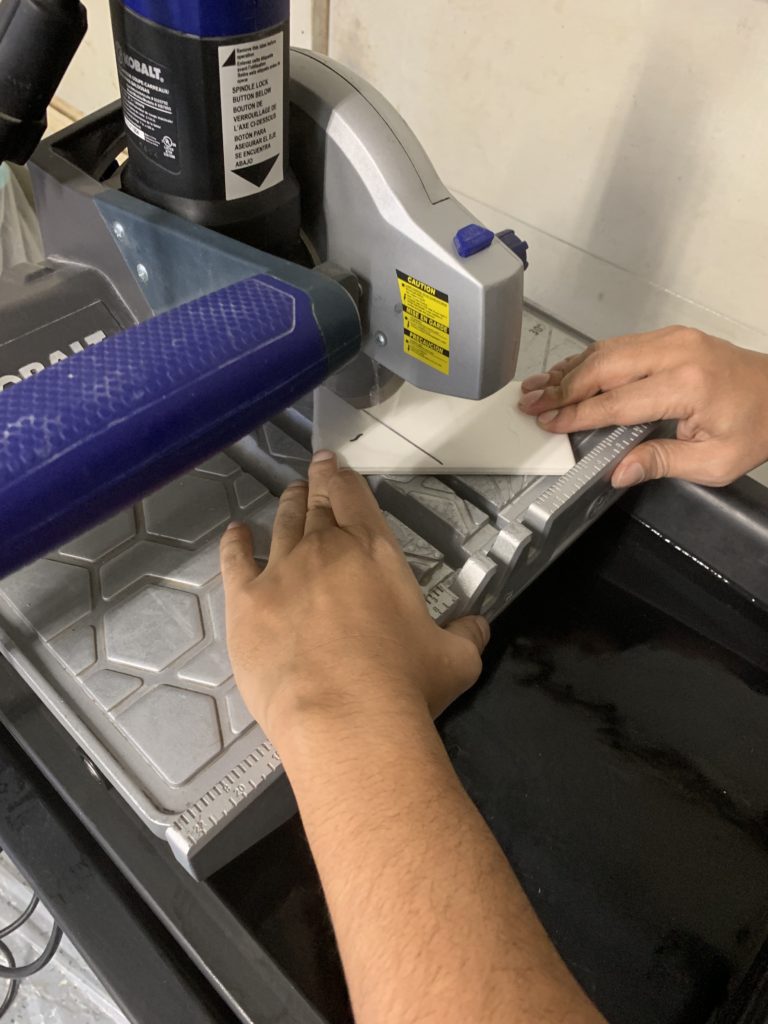
5. Mix your mortar (or cheat and used premixed)
There’s a time for mixing powder mortar and there’s a time for using premixed mastic. We used MAPEI Type 1 Ceramic Tile Mastic for this project and we use it for all of our small projects. It’s seriously the best and so easy to work with speaking from experience (no ad hurr).
For large projects not so much. It’s WAYYY more cost effective to mix your own if you are doing a substantial amount of tile work.
(Be sure to do your research here – different mortars/adhesives only work well with certain substrates and environments)
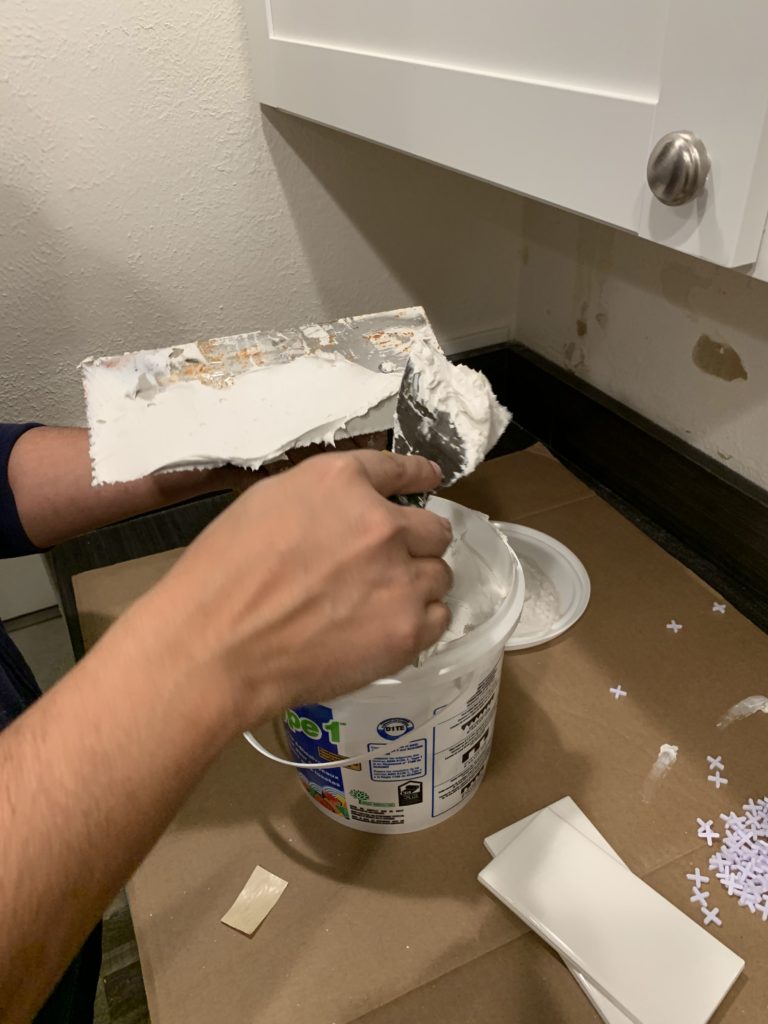
6. Spread your mortar
Using the notched edge of your trowel, spread a thin layer of mortar on a 2-by-2 foot-ish section of the wall using broad curved strokes. You’ll want to hold the trowel at a 45 degree angle and press down hard enough to make a scraping sound.
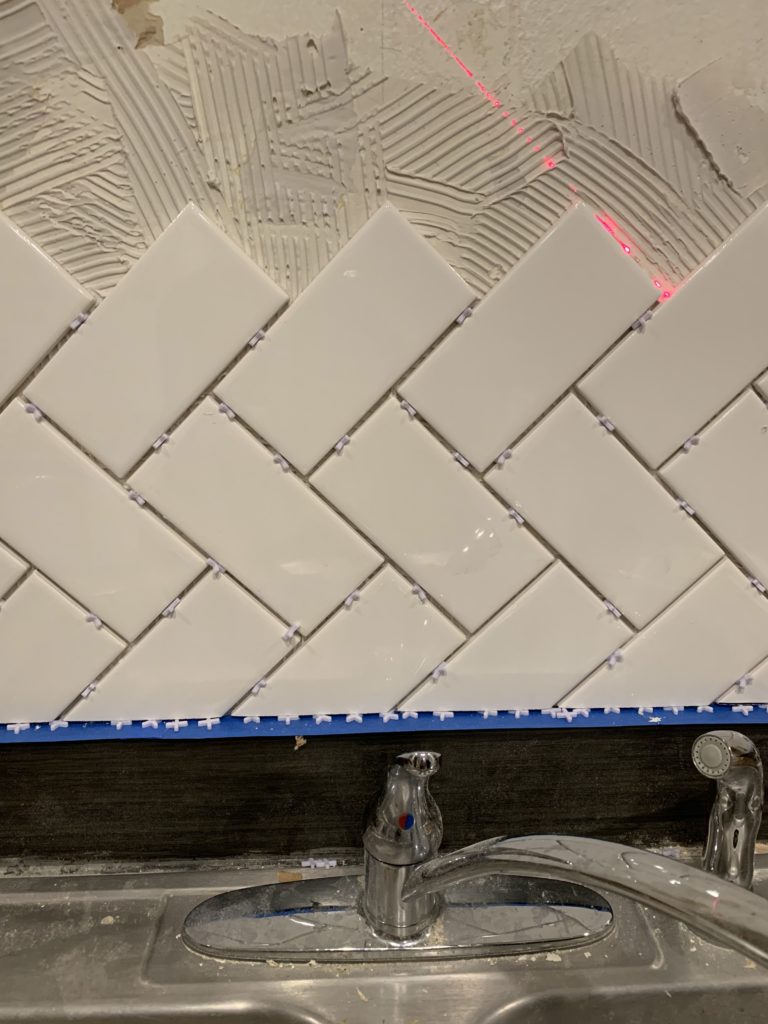
7. Lay your tiles
Gently press your tiles into the mortar with a slight twisting motion – the goal is complete contact between the tile and adhesive, but you don’t need to mash them down. Use spacers and angle square to keep the tiles square to each other as you go.
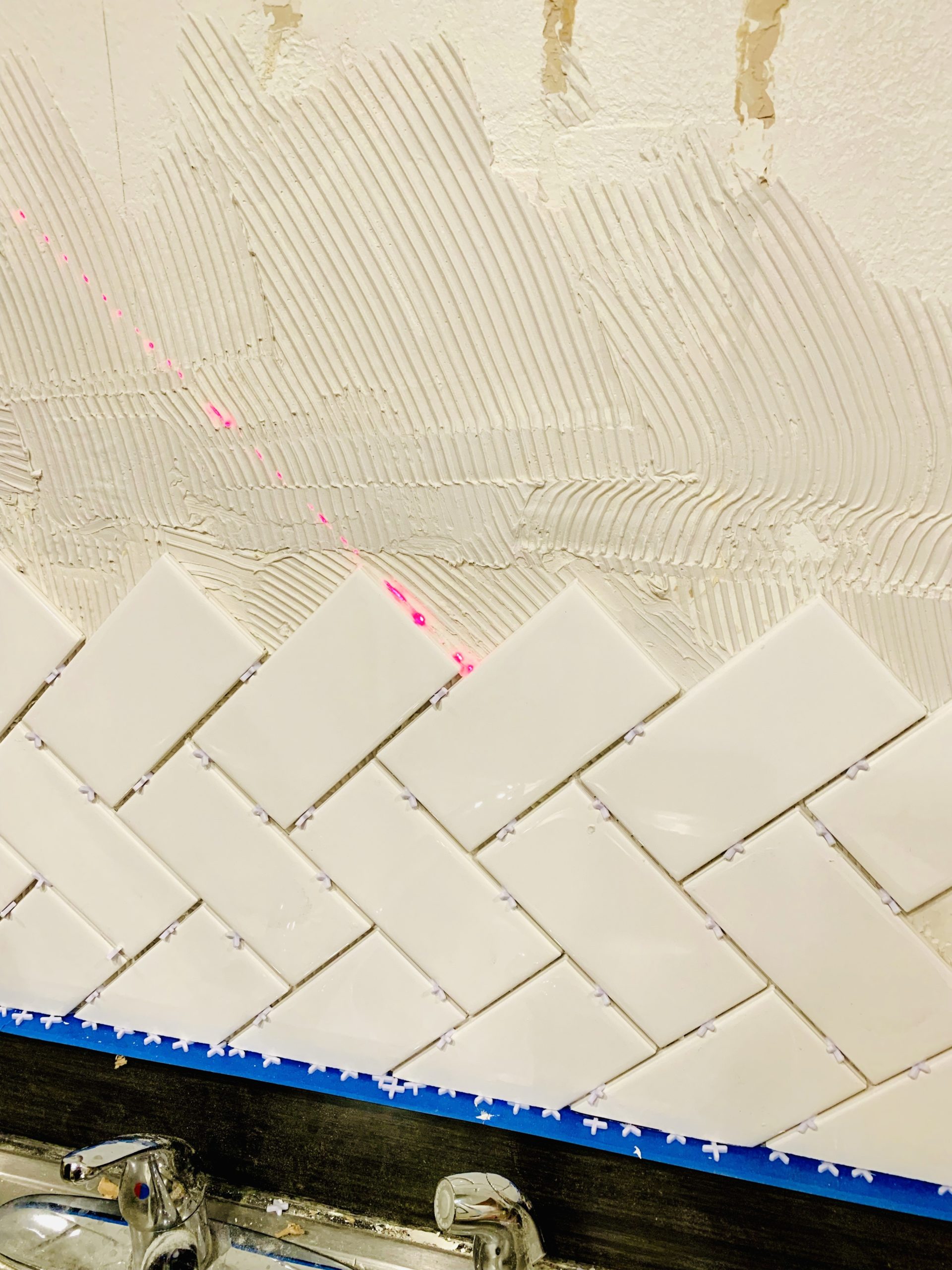
For outlets and other odd cuts, we used an angle square and/or painters tape to help us mark where we needed to make the cuts.
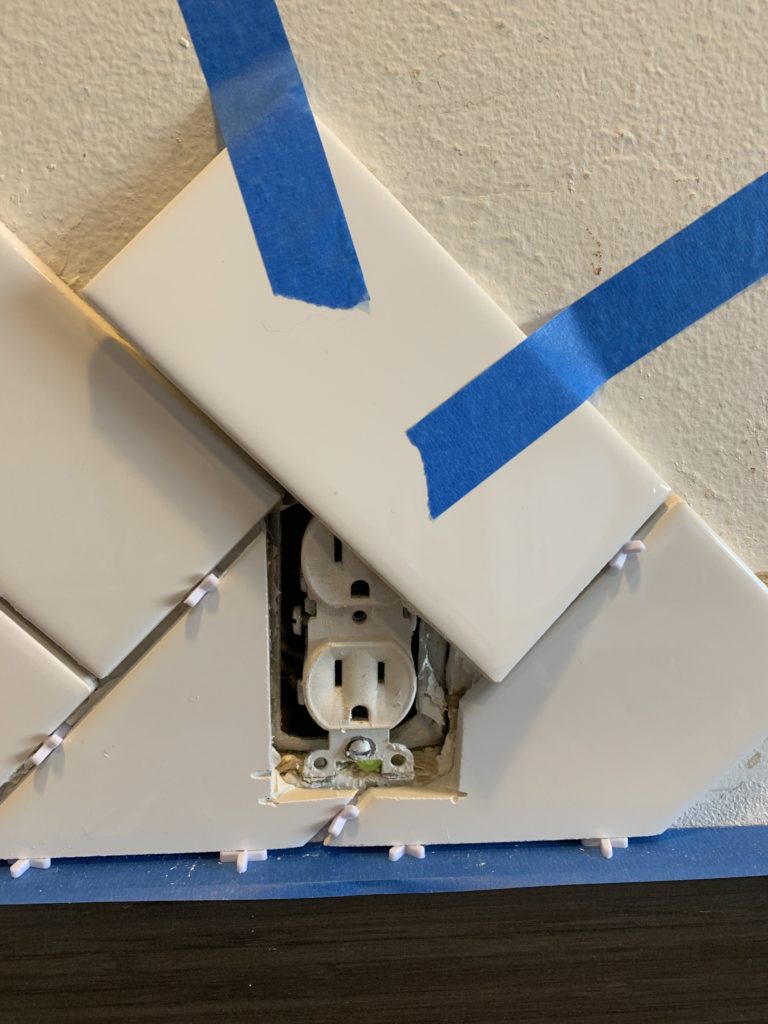
8. Fill the joints with grout
After your tiles set for 24 hours (or overnight because I’m impatient), use a grout float to press grout into the tile joints at a 45 degree angle. We used the premixed MAPEI Flexcolor CQ, but what we should have used is the MAPEI Keracolor powder grout. The consistency of the premixed stuff was so crumbly and totally not ideal for walls. We found grout for months afterwards.
Make sure you fill the joints completely with grout, but don’t worry about getting it perfect. Any extra/uneven grout will get smoothed out in the next step.
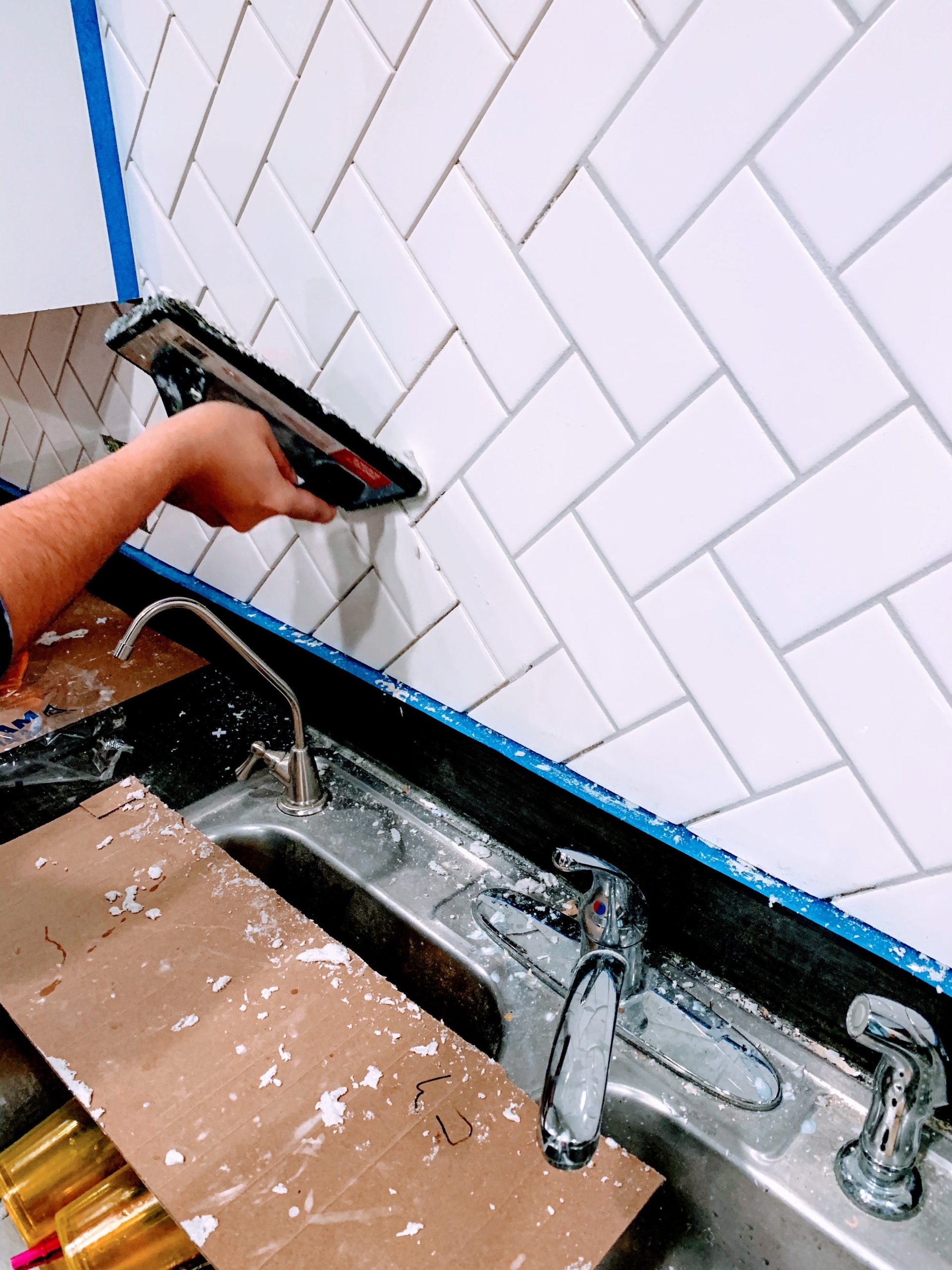
9. Clean the grout
As your grout starts to dry (about 20-30 minutes), take a well squeezed, damp grout sponge and start wiping the grout in a circular motion to smooth out the joints. Make sure to clean away any grout that is spilling over the joint onto the tile, but not so much that you knock the grout out.
Wait for the tile to haze over and clean again, and again, and probably again. Of course I didn’t get pictures of this process, but it’s pretty straight forward. Here’s the finished result!
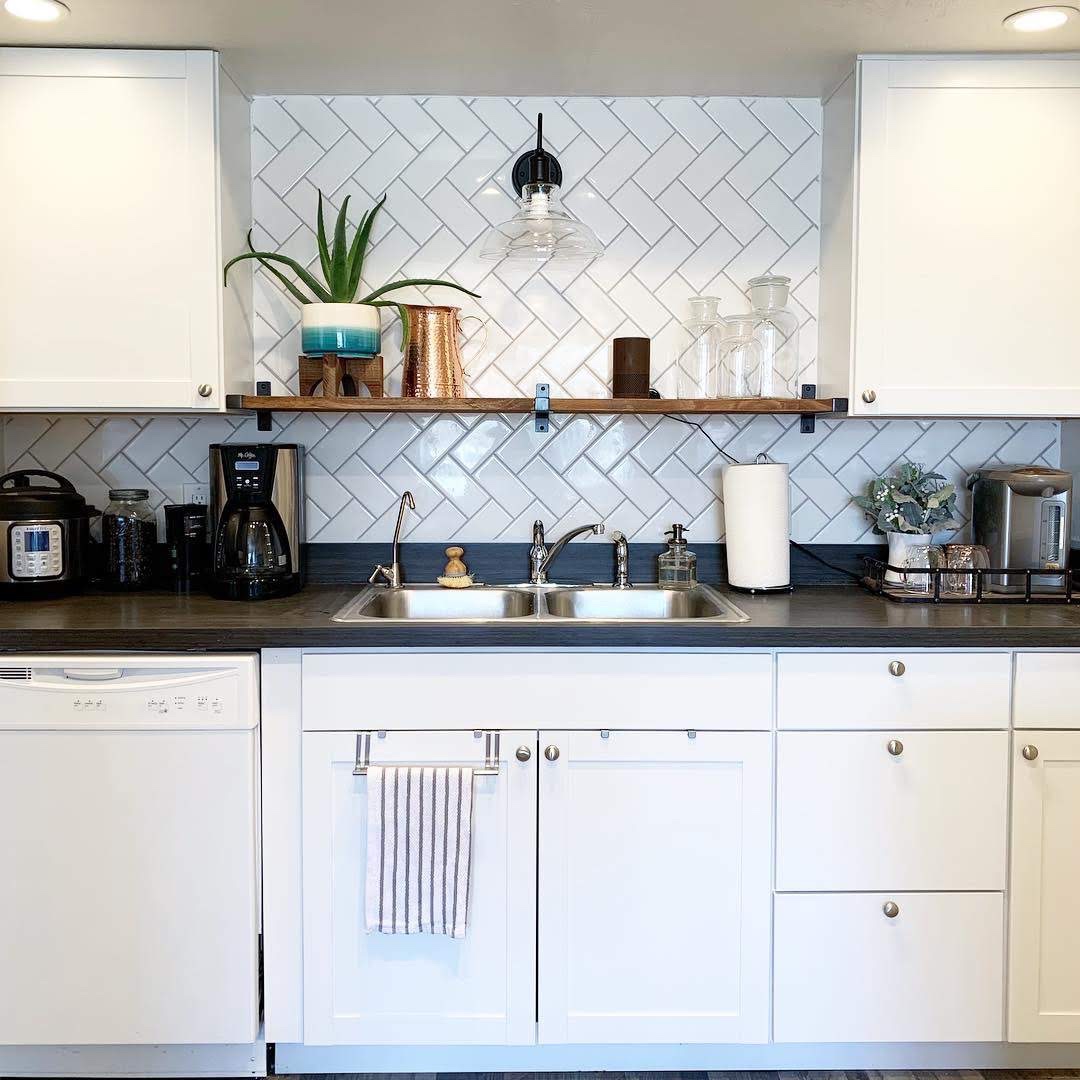
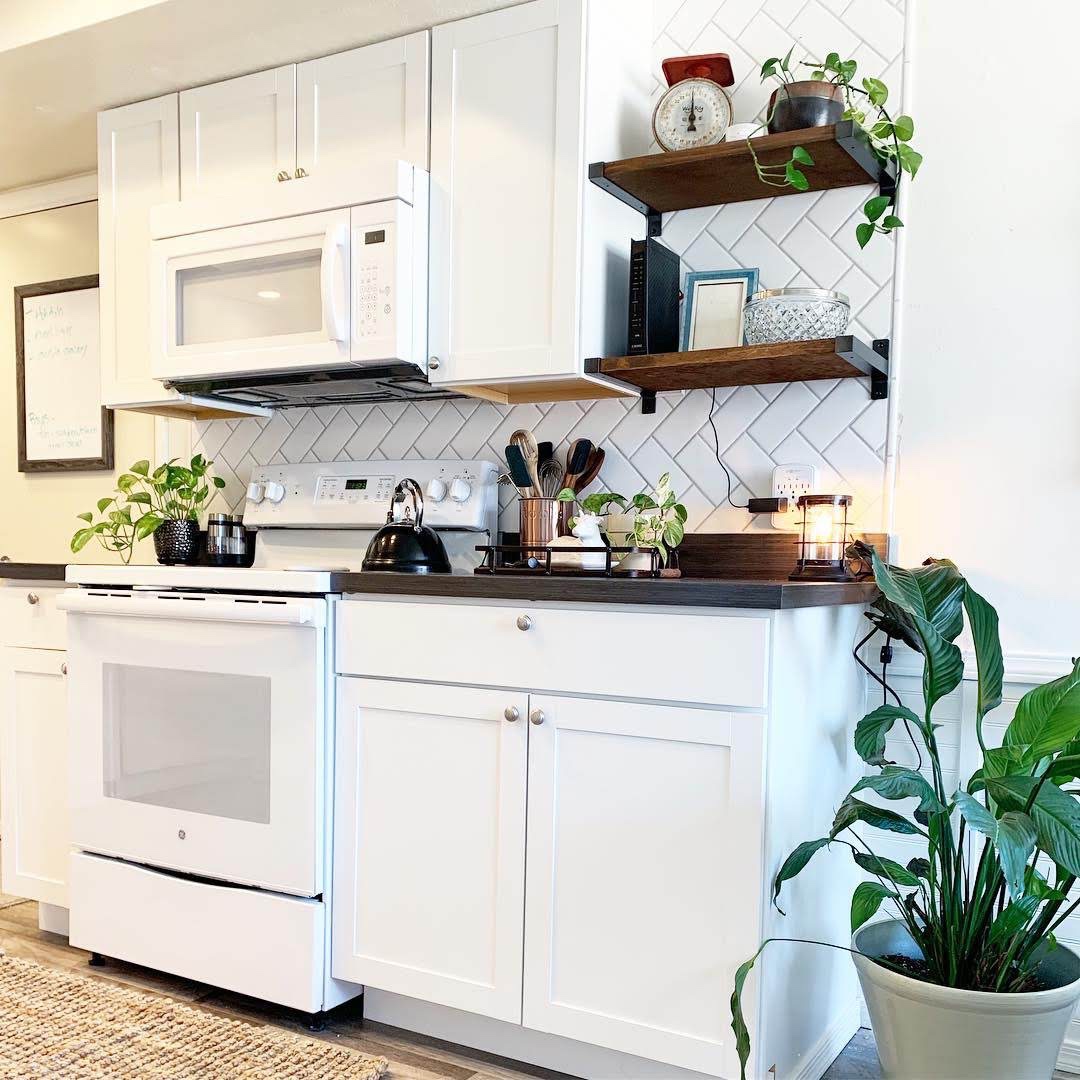
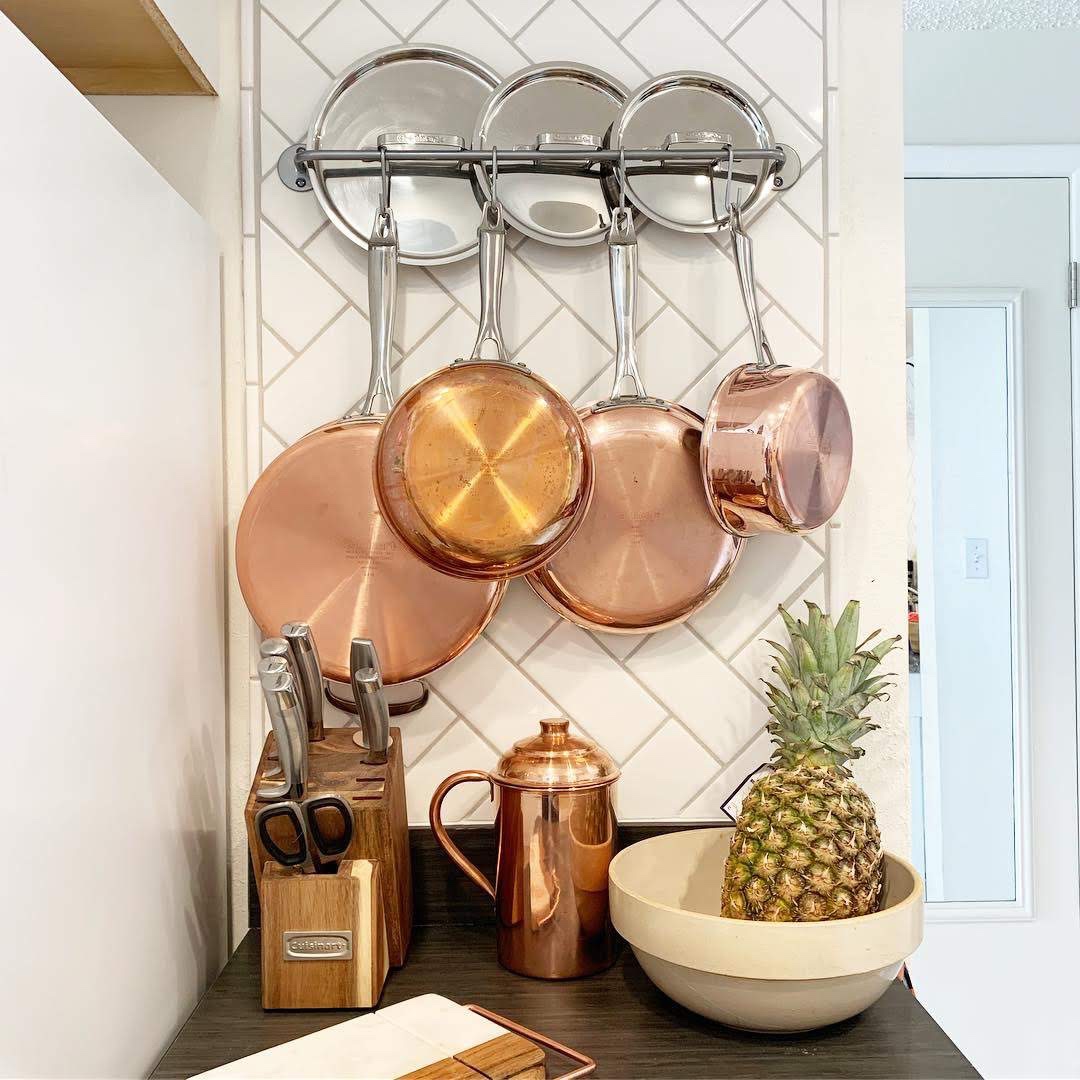
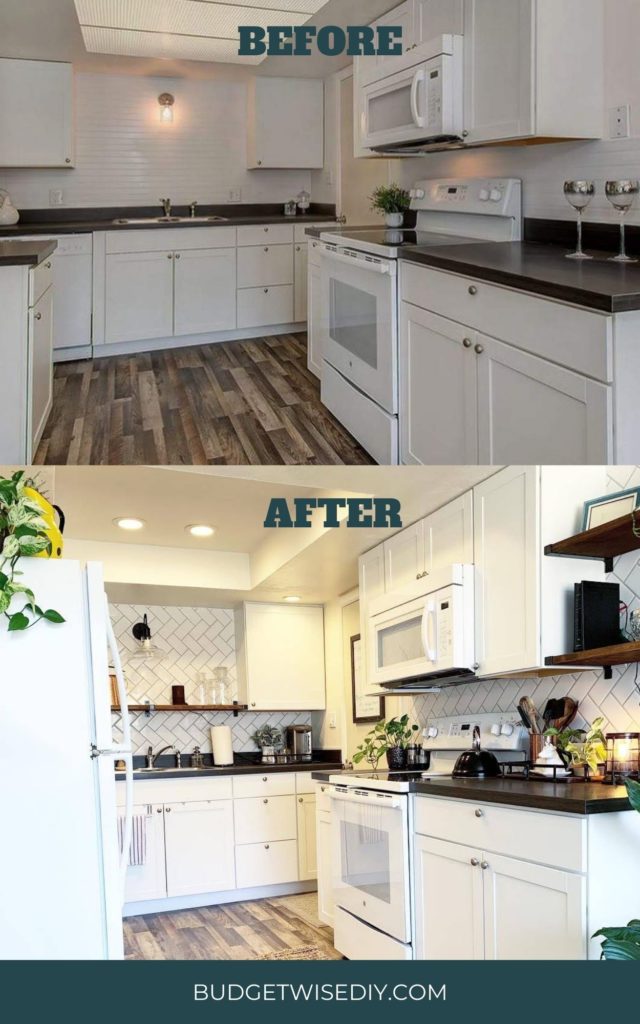
And that’s how you install a herringbone subway tile backsplash. Got questions or feedback? Drop a comment below!
